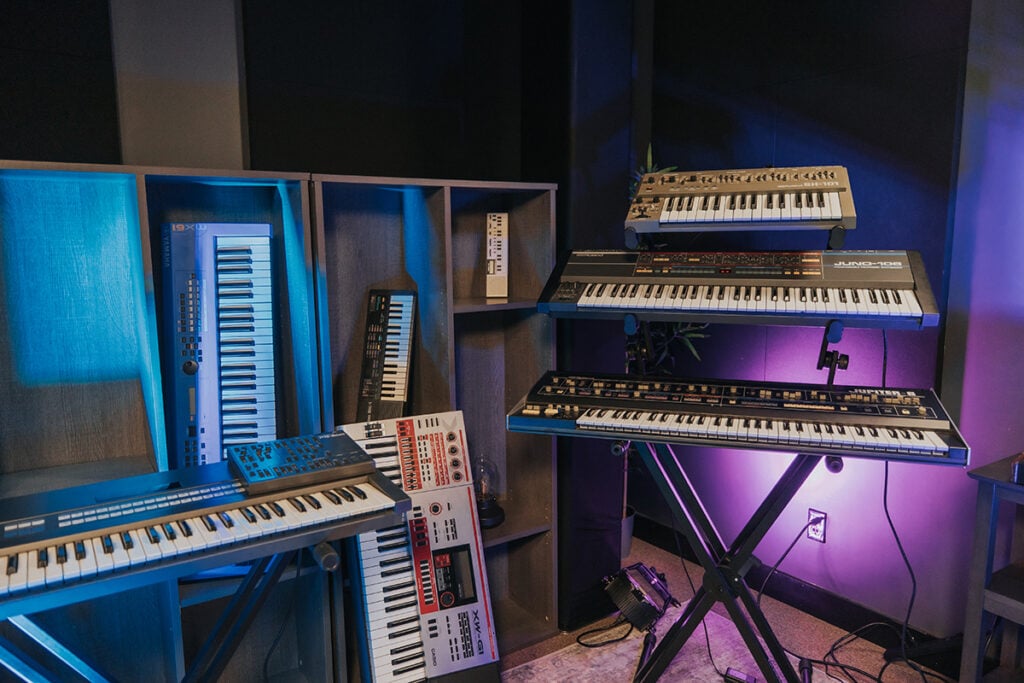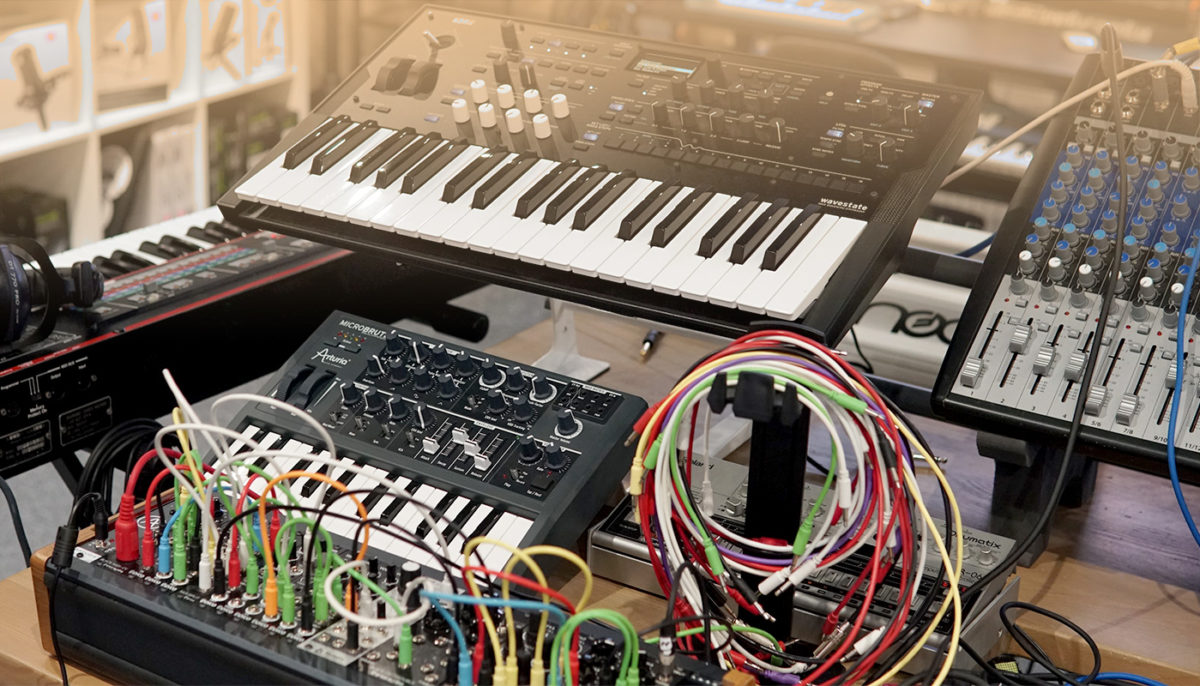Blog
“Exploring the World of Digital Instruments and Synthesizers”
The world of music is vast, and in recent decades, digital instruments and synthesizers have transformed how we create, perform, and experience sound. These tools allow musicians to explore new sonic landscapes, experiment with unique textures, and produce sounds that were once impossible to achieve with traditional instruments. Whether you’re an aspiring musician or an experienced producer, understanding digital instruments and synthesizers can open up a whole new realm of creativity. In this article, we’ll dive into what digital instruments and synthesizers are, how they work, and some popular types and brands you should know about.
What Are Digital Instruments and Synthesizers?
Digital instruments refer to any musical tools that generate or modify sound through digital processes. These instruments rely on computer-based technology, often involving software, hardware, or a combination of both. They can simulate traditional instruments like pianos and guitars or create entirely new sounds that don’t exist in the natural world.
Synthesizers, a key category of digital instruments, are electronic devices that generate sound through various methods, such as subtractive synthesis, additive synthesis, and FM (Frequency Modulation) synthesis. Synthesizers can create an endless variety of sounds, from classical to futuristic tones, making them an essential tool for composers, electronic music producers, and sound designers.

How Do Digital Instruments Work?
Digital instruments rely on sound processing techniques to generate and manipulate audio signals. The process begins when the musician interacts with the instrument, producing an initial sound or tone. This tone is then converted into digital information by the instrument’s hardware, which is processed using algorithms and software to create unique sounds.
In synthesizers, there are several primary methods of sound generation:
- Subtractive Synthesis: The most common method used by analog and digital synthesizers. It works by shaping a rich waveform (such as a sawtooth or square wave) and then subtracting parts of the sound using filters to create the desired timbre.
- Additive Synthesis: This approach combines several simpler waveforms to create complex sounds. It involves building sounds from multiple sine waves, each with a specific frequency, amplitude, and phase.
- FM Synthesis: Frequency Modulation synthesis generates complex harmonic content by modulating one waveform (carrier) with another (modulator). This technique is known for its ability to create metallic, bell-like, and percussive sounds.
- Sample-Based Synthesis: Digital instruments often use samples—recorded sounds of real instruments or objects—as the foundation for sound creation. These sounds can be manipulated, layered, and altered using software.
Types of Digital Instruments and Synthesizers
Digital instruments and synthesizers come in many forms, each with its own unique features and capabilities. Here are some of the most popular types:
1. Digital Pianos and Keyboards
A digital piano or keyboard is a versatile electronic instrument that simulates the sounds and feel of a traditional acoustic piano. These instruments offer a wide range of sounds, including electric pianos, strings, and percussion, and come with customizable settings and effects.
- Popular Models: Yamaha P-Series, Roland FP Series, Korg SP-280
- Best For: Pianists who need portability and flexibility, as well as those looking to add variety to their performances.
2. Analog vs. Digital Synthesizers
While analog synthesizers use analog circuits to generate sound, digital synthesizers rely on digital processing. Digital synthesizers are capable of producing more complex sounds with greater precision and are often more flexible due to their programmable nature.
- Popular Models: Yamaha DX7 (FM synthesis), Roland Juno-106 (analog), Korg Minilogue XD (hybrid analog-digital)
- Best For: Electronic music producers, sound designers, and musicians looking to explore advanced synthesis techniques.
3. Drum Machines
Drum machines are digital instruments that replicate the sounds of a drum kit or percussion ensemble. They are often used in electronic music production to create rhythmic patterns and beats. Many modern drum machines are highly programmable and can produce a variety of drum sounds and effects.
- Popular Models: Roland TR-808, Akai MPC Series, Elektron Analog Rytm
- Best For: Electronic music producers and musicians who want to create custom beats and rhythms.
4. Virtual Instruments (VSTs)

Virtual instruments (VSTs) are software-based synthesizers and samplers that run on your computer or digital audio workstation (DAW). These digital instruments can mimic traditional sounds or offer entirely new sonic possibilities. VST plugins are affordable and allow musicians to expand their sound libraries with just a few clicks.
- Popular VSTs: Native Instruments Massive, Serum, Arturia Analog Lab
- Best For: Producers, composers, and musicians looking for cost-effective ways to access a wide variety of sounds.
5. MIDI Controllers
MIDI controllers are devices used to send musical data to other digital instruments or software. They do not generate sound on their own but instead control other devices (such as synthesizers or VST plugins) through MIDI messages. Many MIDI controllers feature keyboard layouts, pads, or knobs, allowing musicians to manipulate sounds in real-time.
- Popular Models: Akai MPK Mini, Novation Launchkey, Native Instruments Komplete Kontrol
- Best For: Music producers, electronic musicians, and anyone working with digital audio.
Why Choose Digital Instruments?
There are several reasons why digital instruments and synthesizers are so popular among modern musicians:
- Flexibility and Versatility: Digital instruments can cover a wide range of sounds and musical genres, from orchestral arrangements to experimental electronic music.
- Portability: Many digital instruments are compact and portable, making them ideal for musicians who need to travel or practice on the go.
- Affordability: While high-end analog gear can be expensive, digital instruments offer high-quality sound at more affordable prices.
- Advanced Features: Digital instruments often include built-in effects, sequencers, arpeggiators, and even the ability to program and save custom patches and sounds.
Popular Digital Instrument Brands
Several brands are leading the charge in digital instrument and synthesizer technology, creating high-quality products used by professionals around the world:
- Roland: Known for their innovative synthesizers, drum machines, and digital pianos. Roland has been at the forefront of electronic music for decades.
- Yamaha: Renowned for producing reliable, versatile digital pianos, synthesizers, and sound modules.
- Korg: Korg is celebrated for its synthesizers and keyboards, including its analog-digital hybrid models and popular drum machines.
- Arturia: A company that specializes in software-based instruments and hardware synthesizers with a vintage sound, Arturia has become a go-to brand for electronic musicians.
Conclusion
Digital instruments and synthesizers have opened up new realms of musical creativity, offering endless possibilities for musicians of all levels. Whether you’re an aspiring electronic music producer, a keyboardist looking to explore new sounds, or a drummer experimenting with new rhythms, there’s a digital instrument out there that can help you achieve your musical goals. By understanding how these tools work and exploring the wide range of options available, you’ll be able to choose the right equipment to elevate your music to new heights. Happy exploring!


